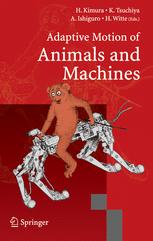

Most ebook files are in PDF format, so you can easily read them using various software such as Foxit Reader or directly on the Google Chrome browser.
Some ebook files are released by publishers in other formats such as .awz, .mobi, .epub, .fb2, etc. You may need to install specific software to read these formats on mobile/PC, such as Calibre.
Please read the tutorial at this link: https://ebookbell.com/faq
We offer FREE conversion to the popular formats you request; however, this may take some time. Therefore, right after payment, please email us, and we will try to provide the service as quickly as possible.
For some exceptional file formats or broken links (if any), please refrain from opening any disputes. Instead, email us first, and we will try to assist within a maximum of 6 hours.
EbookBell Team

5.0
78 reviews• Motivation It is our dream to understand the principles of animals’ remarkable ability for adaptive motion and to transfer such abilities to a robot. Up to now, mechanisms for generation and control of stereotyped motions and adaptive motions in well-known simple environments have been formulated to some extentandsuccessfullyappliedtorobots.However,principlesofadaptationto variousenvironmentshavenotyetbeenclari?ed,andautonomousadaptation remains unsolved as a seriously di?cult problem in robotics. Apparently, the ability of animals and robots to adapt in a real world cannot be explained or realized by one single function in a control system and mechanism. That is, adaptation in motion is induced at every level from thecentralnervoussystemtothemusculoskeletalsystem.Thus,weorganized the International Symposium on Adaptive Motion in Animals and Machines(AMAM)forscientistsandengineersconcernedwithadaptation onvariouslevelstobebroughttogethertodiscussprinciplesateachleveland to investigate principles governing total systems. • History AMAM started in Montreal (Canada) in August 2000. It was organized by H. Kimura (Japan), H. Witte (Germany), G. Taga (Japan), and K. Osuka (Japan), who had agreed that having a small symposium on motion control, with people from several ?elds coming together to discuss speci?c issues, was worthwhile. Those four organizing committee members determined the scope of AMAM as follows.